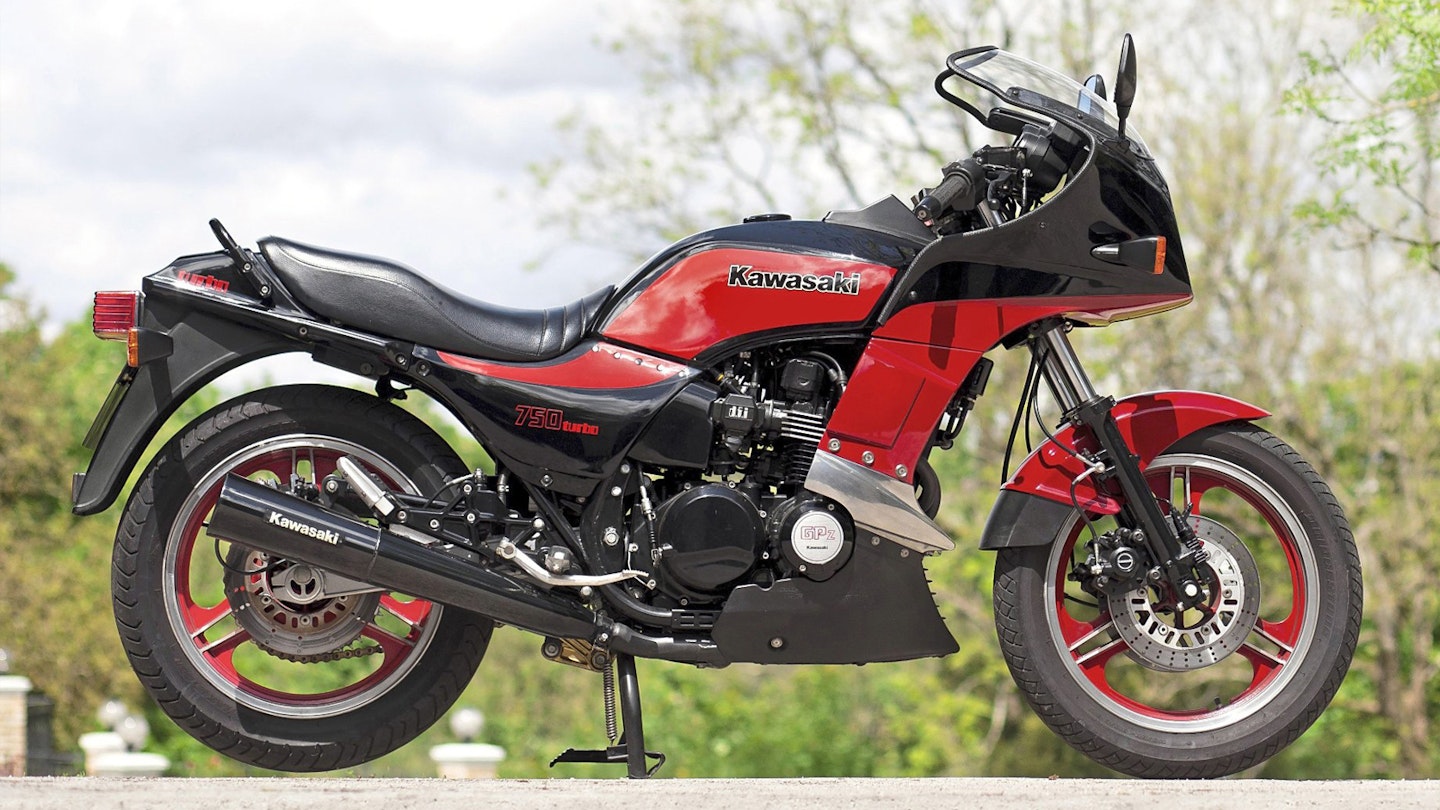RICK RIDES
For a time in the 1980s, it looked like turbocharging was the future – and one bike soon blew the rest away. But was Kawasaki’s 750 Turbo a winner or just a load of hot air?
Words RICK PARKINGTON Photography GARY MARGERUM
Funny how minor styling details stick in your mind. If you’d asked me last week to name some mid-’80s Kawasakis, the 750 Turbo is the one I’d have forgotten. But I do remember liking the one with a funny row of studs, like bullet holes, along the side panel – and a guy who sauntered over for a look at this bike during my test said he’d recognised it by the alloy midriff to the fairing.
Well, that’s the 750 Turbo. But beyond its visual appeal, as I stood alongside the ZX750E – Kawasaki never called it a GPz – on loan from Earl Classics, I didn’t have very high hopes. I mean, turbos... really? To me, putting a turbo on a road bike was just marketing patter – aimed at older versions of the kid who stood at the counter asking me if we had a ‘power band’ in stock for his DT125. Honda had already made turbos a bit of a joke by charging their spinsterly CX500, while the Suzuki and Yamaha offerings were little more convincing. The GPz1100 was pretty damn good as I recall, so why would anyone buy a 750 with a built-in vacuum cleaner – however studded the side panels?
‘To me, putting a turbo on a road bike was just marketing patter – aimed at older versions of the kid who stood at the counter asking me if we had a ‘power band’ in stock’

Well, now I think I know. The Turbo is a surprisingly nice bike to ride. For a start, the slinky looks are practical – the contoured seat and tank combination make it narrow and provide the classic ‘sitting in, not on’ position which is a blessing for shorter-legged riders. I liked it too – although low seats can spell a cramped riding position for those of my height, again the Kawasaki scored with the relationship between seat, pegs and bars, encouraging me to adopt a near perfect back-straight position rather my usual lumbarcrunching slouch. On top of that, sitting in a bike always inspires cornering confidence and I felt immediately at home on the 750 – my only complaint being the stylish fairing mirrors that required me to bodyswerve like a rugby player to see behind my shoulders. But then, as my dad says: ‘You should know what’s behind, because you’ve just overtaken it,’ and that’s an area at which the Turbo excels.

The first I heard of the turbocharger was an odd jingling noise at 3000rpm, like a phone ringing in my pocket – this, I realised, was the beast stirring but not yet awake. Power was adequate while it slept – although on a long, steepish climb I might as well have been on a Z200 and noticed cars racking up embarrassingly behind me. Dropping a cog, I soon pulled away again – but you wouldn’t need to do that on a Bonneville. And again, later, when I tried to accelerate in fourth to pass a cyclist I’d been sitting behind, it almost felt like it was in ‘limp mode’. I tell you this not to expose my lazy British bike rider’s ways, but because it’s it’s not a slogger, you need to be in the right gear, and I liked the bike so much it didn’t annoy me. I blamed myself, mutely apologising and cogging down. But when the turbo kicks in... well, that jingling at 3000 may be the alarm clock ringing, but it has a long snooze setting. It’s not till 5000 that we get up and go – and then all hell breaks loose. It’s not exactly a ‘power band’ like that lad wanted for his DT – or if it is, I didn’t find the other side. It was more like riding a twin that’s been running on one cylinder and suddenly cuts to two. The power just seemed to keep coming faster and faster with no real indication of flattening off.
